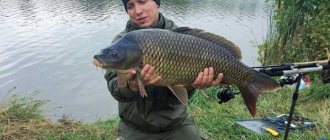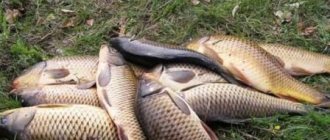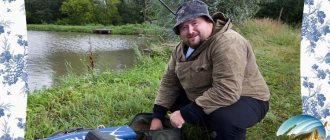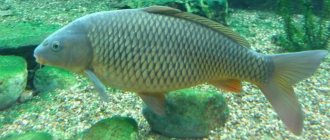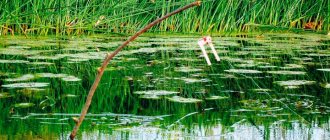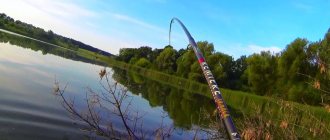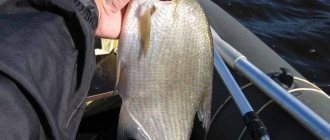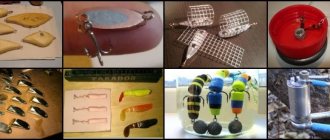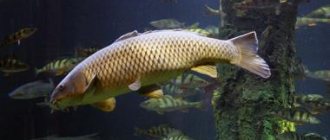Fishing for carp in March is a very exciting process, because you never know what size the trophy will be. Moreover, the chance of catching a heavy carp is quite high. To make the dream of many carp fishing lovers come true, very little is needed: well-chosen bait and bait, a suitable fishing spot and fire in the eyes!
Later in the article we will discuss March baits and baits in more detail. Let's look at the gear used and try to determine the places where this fish is constantly active in the first month of spring, and that's where we'll start.
catchable places
Like all white fish, carp is quite heat-loving and therefore it tries to stay in places where it can “warm up”. Suitable water temperature is 4-6 degrees (above zero). As soon as he finds such a place, he will immediately set up a “parking lot” there. We must not forget about oxygen; the higher its concentration in the reservoir, the more active the carp will be in trying the sweets offered to it. Do not try to find carp in reservoirs where there is negligible oxygen; there they behave sluggishly.
A good place for fishing with this underwater “vacuum cleaner” can be a large river with a variety of holes, dumps and edges. A cluster of snags is one of the favorite places for fish, including carp. You can also try to fish for carp in the vicinity of the dams, at a depth of 2-3 meters. Searching for this underwater inhabitant at depth is the rule; exploration in shallow water is the exception to the rule. This is explained by temperature: at depth the water is warmer, and on the shore it is cooler. Although, as practice shows, it can be caught close to the coastline. Having learned about this, you need to draw a conclusion: you need to experiment, look for some “key” with which you can open the box with all the secrets related to catching korop.
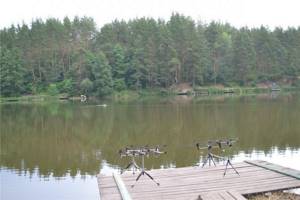
There is a certain trick that will help you during the fishing process, it is as follows: if you are fishing on a permanent pond, feeding fish in the fall can be considered relevant and effective. The river “vacuum cleaner” quickly gets used to places where food is constantly presented on a “plate”.
How to catch the biggest carp
Nowadays, fishing has become a mass phenomenon, pressure on reservoirs has increased, and fish have learned to avoid the dangers created by fishermen. The largest carp in a pond, as a rule, has a heightened instinct of self-preservation, which allows it to survive among fishing gear. Catching him is a difficult task, but you can try. It is suggested to do the following.
How to find carp
Trophy-sized carp are almost always found in the same areas of the reservoir. It is almost impossible to pull it out of these areas with bait.
Therefore, the choice of location plays a huge role. How to detect areas where fish are located? The best way to do this is by observing the reservoir. If you spend enough time watching, you might see a carp playing. Armed with polarized glasses and observing from a high place, you can spot carp even not deep underwater.
But you will most likely be able to see large carp in quiet, rarely visited areas of the reservoir. As a rule, in areas with high fishing pressure, such fish are either absent or do not manifest themselves.
At night, carp can be heard by the characteristic sounds it makes. This can also help in choosing a location.
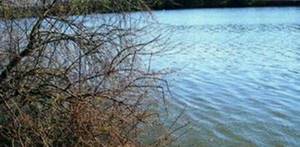
Choose a place for fishing
What to do if you can’t find a large carp? It remains to fish where there are no other fishermen or where they catch very rarely.
Usually such places on a reservoir are difficult to access or not convenient for the fishermen themselves, but this does not at all indicate that there are no fish there. Carp in such places feels much calmer and more confident. It is in the remote corners of the reservoir that you are more likely to find a truly worthy trophy.
The most promising areas according to visual signs remain snags and areas of water separated from the shore by a solid wall of reeds.
You need to go around the reservoir lightly, armed with perhaps only one piece of gear. The difficult delivery of all the equipment to a distant nook is compensated by the opportunity to actually catch a trophy.
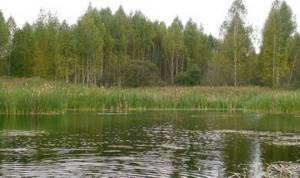
Fishing on a carp pond
Be invisible, don't make noise
It is necessary to set up the camp with extreme camouflage, observing silence and caution. You must strive to make it as if you were not on the shore at all.
- As a rule, the most serious sound that alarms and causes fish to flee is the slam of a car door. Therefore, it is better to remove everything you need from the car at once, immediately upon arrival.
- Bite alarms also create a significant disturbing sound. It is better to set their volume level to the minimum value, or, if possible, turn off the sound completely and use the pager on vibration.
- The fish are excellent at catching trampling on the shore. You should not drive stakes, chop wood, etc. near the fishing spot.
- In addition, the vibration of the fishing line, which the carp can also feel very well, should be minimized. It's best to even put the rod tips under water.
Camouflage when fishing for carp
The camp must be equipped in such a way that it is not visible at all from the water side, for example, behind trees. If this is not possible, then the tent closest to the water should have a camouflage color and blend into the landscape. A car should be placed behind the tent, and a table should be installed between them, etc.
But the fishermen themselves are most noticeable to the fish, since a moving (and noisy) object stands out very well against a calm natural background. Travel routes between camp sites should be minimal and preferably away from water.
You shouldn’t go too close to the water unless absolutely necessary, and spend most of your time behind shelters, in a tent, etc. Sudden movements should be avoided, and of course, loud conversation, laughter, music would be completely inappropriate...
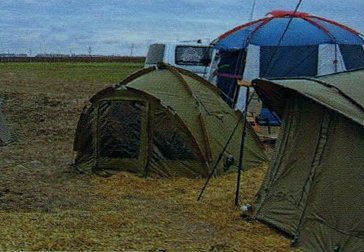
The amount of fishing line scares the fish
If you are catching large fish, then it is worth remembering that very large carp are also suspicious of a large amount of fishing line in the water. Therefore, it is wiser to reduce the number of rods to two per fishing point.
It is also important to lay the line completely on the bottom. The tension should be loosened as much as possible so that it can sink under its own weight and literally merge with the bottom. Secondly, it is better to use so-called fast-sinking fishing lines, monofilament or fluorocarbon.
The leash should also be flush to the bottom. It is better to shorten the bumper cone, which covers the swivel connection, or load part of the leash under the bumper cone with several turns of wire from the leadcore, and along the remaining length - in one or two more places, with special weights.
How to make a snap
The usual recommendations for installing equipment.
- Use hooks with a matte finish.
- Select the color of the equipment elements (sinkers, clips...) to match the color of the bottom.
- Before casting, it is better to keep the sinkers in water from the reservoir for several hours.
- Instead of leadcore, it is better to use a monofilament leader.
- Ensure maximum mobility and swing speed of the hook. The fact is that the largest carp that takes the bait often remains in place, so the sinker will not work. To improve the mobility of the hook, you can also use installation with an additional swivel on the leash.
Features of bait and bait
A large concentration of bait at a point can alert large carp. When it comes to catching a trophy, it is not recommended to feed abundantly. Usually it is enough to place up to a couple of dozen good bait boilies near the nozzle.
If it is known that fishing is carried out not in places of constant feeding of carp, but on the paths of its movement, then uniform, non-dense feeding of a large area with large insoluble boilies can be used.
It is better to completely avoid throwing bait in balls or using rockets, so as not to alert the fish. It is recommended to mark soluble materials or a cobra tube. Groundbait boilies should be very large and tasty.
But you still need to use smaller boilies as bait. And the point again is the caution of very large carp. The natural food of a reservoir is always very small. Therefore, the use of large boilies on the equipment will not increase the likelihood of biting the trophy, but they can attract small carp, which are hungry and capable of swallowing other things. For example, carp up to a kilogram can easily swallow a couple of boilies with a diameter of two tens of millimeters. Therefore, it is better to use 10 - 12 mm boilies on the equipment. It’s also a good idea to use corn, natural or canned.
Peculiarities of biting trophy carp
A large carp can remain wary and motionless even when the hook is embedded in the lip. At the same time, the carp shakes its head trying to get rid of the hook. Such a bite may look like just small twitches of a visual indicator, or in the form of single sound signals from the electronics.
To more confidently register such bites, the sound alarm should be set to the highest possible sensitivity. To visualize them, you can use “bats” on a chain with heads of the smallest mass.
When such a bite is registered, you need to immediately hook it.
Correct fishing
If there are no natural shelters for carp (snags, reeds), then there is no need to limit the first jerk of the fish. Having walked 30 meters at maximum speed, a large carp will use up its strength to overcome the resistance of the water. When the fish starts to slow down, you can help it by slowing down the spool with your hand. But if the shelter is not far away and the trophy is heading there, then you still shouldn’t drag it with all your might.
It’s better to tap the rod hard with your hand, which often leads to a change in the direction of the fish’s movement. If the carp does get to the snag or is “buried” in the reeds, you shouldn’t even try to pull it out by force. The most likely outcome of such an action is a breakage of the equipment. It’s better to just loosen the clutch and leave the carp alone. Quite often, after sitting out, he comes out of hiding on his own, although it may take more than an hour to wait for such an outcome.
It is better to pump out the trophy more slowly, in order to tire the carp as much as possible at a distance, before meeting the landing net. It is better to catch carp in a landing net in deeper places, so a partner with a landing net (a large carp one) should go into the water at least waist-deep. In the dark, it is more useful to use a red lantern; the carp will be much calmer.
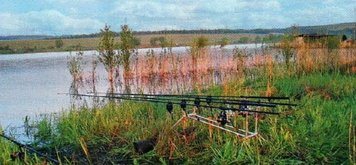
Handling the trophy on shore
When the trophy is already in the landing net, then, of course, you cannot lift the landing net by the handle, so as not to simply break it and lose the fish.
- Grab the landing net above the fish with one hand, and hold the handle right next to the net with the other, and thus carry a large carp to the shore.
- Handle the fish as carefully as possible.
- It is not easy to hold a large carp in your hands. When taking photos, kneel down and hold the fish over the mat, as low as possible.
- The time the fish spend on the shore should be minimal. Do not delay in releasing the fish.
- Pay attention to your clothing; there should not be anything sharp on it that could scratch you when you pick up the fish.
- Do not carry the fish in the water in your hands; it may break free when it gets close to the water. Use a mat or a special bag.
- When releasing the carp, go deeper into the water, and then remove the mat or bag from under the fish, while holding the fish only with its belly down.
It only remains to add that trophy carp is a very ambiguous concept. Each angler understands it depending on his previous fishing experience. And from reservoir to reservoir, the mass of the largest fish living in them can vary greatly. But the largest carp in a pond is always the most desired trophy of every carp angler.
Let's talk about gear
Carp can be caught with float tackle and jigs. They both can show decent results. Considering that fishing takes place in March (the ice is still there), it is more practical to use a jig. Float tackle is characterized by more measured fishing, while a jig involves active action. All fishermen with extensive experience behind them prefer active play. In addition to the jig, first of all you will need a fishing rod (standard winter), a nod (10-15 cm long). Let's talk about fishing line; it can be braided or monofilament. Braided fishing line has a high breaking load and therefore 0.08-0.1 mm will be enough, monofilament fishing line is inferior in this parameter, you need to knit 0.12-0.16 mm. The exact diameter of the fishing line must be determined based on the size of the fish that are found in the pond.
Choosing bait and tackle for pike fishing in summer
DIY coin spinner
Spinner for rotan
Perhaps the most popular and effective form of jig is the shot. Bloodworms are baited onto a soldered hook (in a bunch). Why in a bun? – this allows you to increase the visibility of the nozzle in the water. The carp bite can be different, the nod alarm can plan in a small amplitude or, on the contrary, it will pull sharply (in this case, you need to hook it immediately.) Once the fish has been detected, there is no need to rush, in no case do not pull it with all your might towards the hole . If the hook is of high quality, after hooking the underwater inhabitant will not go anywhere.
Fishing gear
There are several methods for catching carp; you can fish for it with almost any gear. Experienced fishermen identify several of the most effective ones that will help you catch carp at any time of the year.
On the float
Classic float tackle is more suitable for fishing for crucian carp; carp can easily tear thin and sensitive equipment. That is why an ordinary lapdog and a fly rod are not used for fishing. For float lovers, the most suitable option would be a match; durable and lightweight rods with high-quality reels will allow you to cast over long distances, and correctly selected fishing lines and hooks will not miss the caught fish.
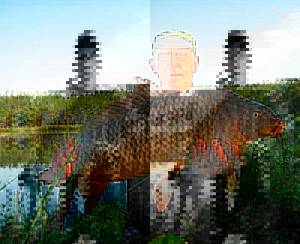
Donkey
It is better to catch carp on the lake in the fall using bottom tackle, and you can use all varieties. The capture will be successful with:
- for makushatnik, this type of fishing involves the use of pressed macadamia, cut into briquettes. It is attached to a metal plate, which acts as a weight for casting and sinking the tackle. The hooks are placed in the briquette itself or left free, with natural animal or plant bait placed on each one. Less commonly used is an artificial nozzle made of foam or other materials.
- The nipple is no less popular; it is often made for fishing with your own hands. The tackle is formed from a nipple container into which bait is stuffed. The hooks are placed in the food; no additional bait is needed. Gradually washed out, the bait will attract large carp and crucian carp. Individuals suck up the food, gradually retract the hook, and this is how the hooking occurs.
- Fishing with a spring follows the same principle, however, the hooks can be additionally baited with plant bait or animals; large-colored foam plastic will also attract the attention of fish.
- Winter fishing for carp is carried out with a high-quality fishing rod, up to 1 m long. Large jigs or spinners are used as bait.
Artificial baits are becoming more and more modernized every season; a good option for catching larger specimens with a feeder would be airy puffie dough of a large fraction, round bait from amino acids, polystyrene foam in protein dough, self-rolled balls of protein dough of the required size.
Catching a carp on a bottom from the shore is every carp angler’s dream, so you should be patient. The main thing is to collect strong gear that can withstand strong jerks even from a relatively small individual.
Groundbait mixtures, baits
Buy a branded one or make it yourself - there are two main ways regarding bait mixture. Probably, the choice between these two options depends on time, which is always in short supply. If a fisherman is limited in time, then most likely he will buy ready-made bait. Well, sometimes you have the time, and even more so the desire, which means you can prepare complementary foods yourself. There are a wide variety of baits, each experienced old-timer has his own little secret. Let's list the main components: breadcrumbs, maggots, bloodworms, ground seeds, mixed feed. We deliver the bait manually (at shallow depths) or in a feeder (starting from 3 m depth). It’s interesting that “delicacies” for carp can be either raw or boiled. Raw feed includes special feed compound, which is used in fish farms. In practice, of course, it is better to use a combination of raw and cooked ingredients, small and large fractions.
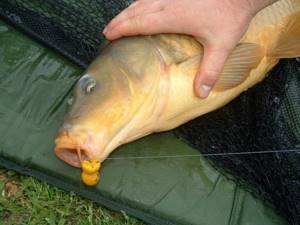
Let's talk about bait. Bloodworms, maggots, bark beetles, and dung worms can be used as bait. If you notice, only attachments of animal origin are listed. They are the ones that cause the greatest demand for fish in early spring. In addition, you can use specific balls - boilies. This attachment can have a different aroma and taste.
The most promising places for carp fishing
So, it is immediately important to select a body of water in which carp will be found. Note that this fish is found in many reservoirs, but not in all. Why? There are many reasons, for example, unfavorable living conditions (low oxygen content, lack of deep areas, poor food supply, polluted water).
Most often, carp are found in rivers with clean running water, as well as in ponds and lakes. Recently, carp have begun to be bred in artificial ponds, where paid fishing is organized. Let us note that in such water areas it will not be very difficult to catch trophy carp.
Most of all, carp loves areas of water with a moderate current or if there is no current at all. When choosing a place to fish for carp, you first need to take into account weather conditions and time of year. Among the most promising areas for carp fishing are:
- Thickets of reeds and reeds in the coastal zone with a depth of one meter;
- Snagged areas of the water area, especially near exits from deep holes;
- Places with sharp changes in depth, whirlpools;
- Areas with sandy or clay bottom;
- Among flooded or fallen trees;
- On the windward coast (in the evening or early in the morning, may appear during the day);
The listed areas are promising, but it is important to note that regardless of this, it is important to take weather conditions into account. The warmer the water, the deeper parts of the water area you will need to look for carp and vice versa.
Read: Habits and nutrition of carp in winter
Making boilies yourself
To make boilies by hand, you don’t need to have any special skills, especially since there are now many recipes, let’s give an example of one of them:
- First, knead the dough.
- Flavoring (vanilla, cocoa), etc. is added to the dough.
- The dough is rolled out and divided into small pieces, from which they are rolled into balls with a diameter of 1 cm.
- The finished balls are frozen in the freezer or boiled.
- The final stage is drying the boilies.
It will be effective to add the following ingredients: cinnamon, ground anise seeds, liquid odor enhancers. I would like to talk about the presence of protein in boilies. Carp needs this nutrient and therefore this fact should not be overlooked.
As you may have guessed, fishing for carp in March is very interesting, the main thing is to believe and then the capture of this beautiful fish will be realized.
No tail, no scales!
Catching trophy carp in the Moscow region
" Back 12.09.2011 21:24Catching large carp in the paid pond “Silver Bowl” on Kievskoye Highway, Moscow Region requires certain knowledge and skills. We will try to tell you in this article about what gear is best to use for carp fishing, how to choose a body of water, how to tame a big fish and then catch it. Step one: choose a body of water.
For carp fishing, a good paid reservoir is suitable, in which the bottom is cleaned and aerated. Which is regularly stocked with fish. To which for many years not a single claim of non-compliance with standards has been made. You can fish for carp here all year round. It is especially successful in early autumn, when the water becomes cool. After all, during these months the fish tries to fill up on fat reserves before the onset of cold weather. It would be a shame not to take advantage of this circumstance to hook the giant. By the way, what should it be like for carp fishing with a fishing rod to end in victory for the fisherman?
Tackle for carp fishing: Carp is a very strong fish. Therefore, to catch carp you need to choose • a fishing line of a solid working diameter (0.22-0.25) with average elongation, without memory, natural colors, since carp are picky about the color of the fishing line; • a rod with a large reserve of power and length; • feeder (a feeder from the German company Browning Force Feeder 13 ft is perfect); • the reel is very powerful (if it has a rear clutch - great); • a large hook made of thick wire (No. 4 - 0.68 mm from the Owner company) with a short sting, a regular, smooth bend and guaranteed sharp, which should be changed after catching each large fish;
• float – sensitive and invisible; • feeder (preferably from the Easy Speed feeder company). With this rig, the carp is almost in your hands. All that remains is to prepare a treat for the fish. Catching carp with boilies: The traditional menu for large fish - worms, maggots, beans and corn - has now been replaced by ready-made food. In particular, boilies. They retain the aroma for a long time, absorb moisture perfectly, can have any shade and attached to a hook using a hair mount, they stick to it perfectly. But the main advantage of such food is that boilies select prey. Only a huge carp can swallow a boilie. It will not attract small fish. And this is what is needed in this case. Another excellent feed option is pellets. It contains wheat, soy protein, gluten, a valuable set of various minerals and acids, flour - 3 types: rapeseed, soy, fish. Everything is absolutely natural and at reasonable prices. As an option, you can prepare your own food for catching large fish using cereals and hemp, pellets, boilies, and various aromatics. The ratio is as follows: feed component - 20%, approximately 40-60 - base, 20% fillers and 5% flavors. For feeder bait, you can use Expo products from Marcel Van Den Eynde. Or you can dream up. Take, for example, corn from a can and soak it in banana attractant from Marcel Van Den Eynde. A big fish will not be able to ignore the deep, tart taste and bright yellow color of an excellent royal meal. Especially during the onset of cold weather. And he will definitely be “captured.” Although, not a fact. Carp fishing is an eternal search for methods of baiting and catching carp. It's always an experiment. But that’s where the whole fun of fishing lies.
Good luck…
Alexey Fadeev
Paid fishing in the Moscow region, Kyiv highway, 25 km from the Moscow Ring Road © 2006-2011
